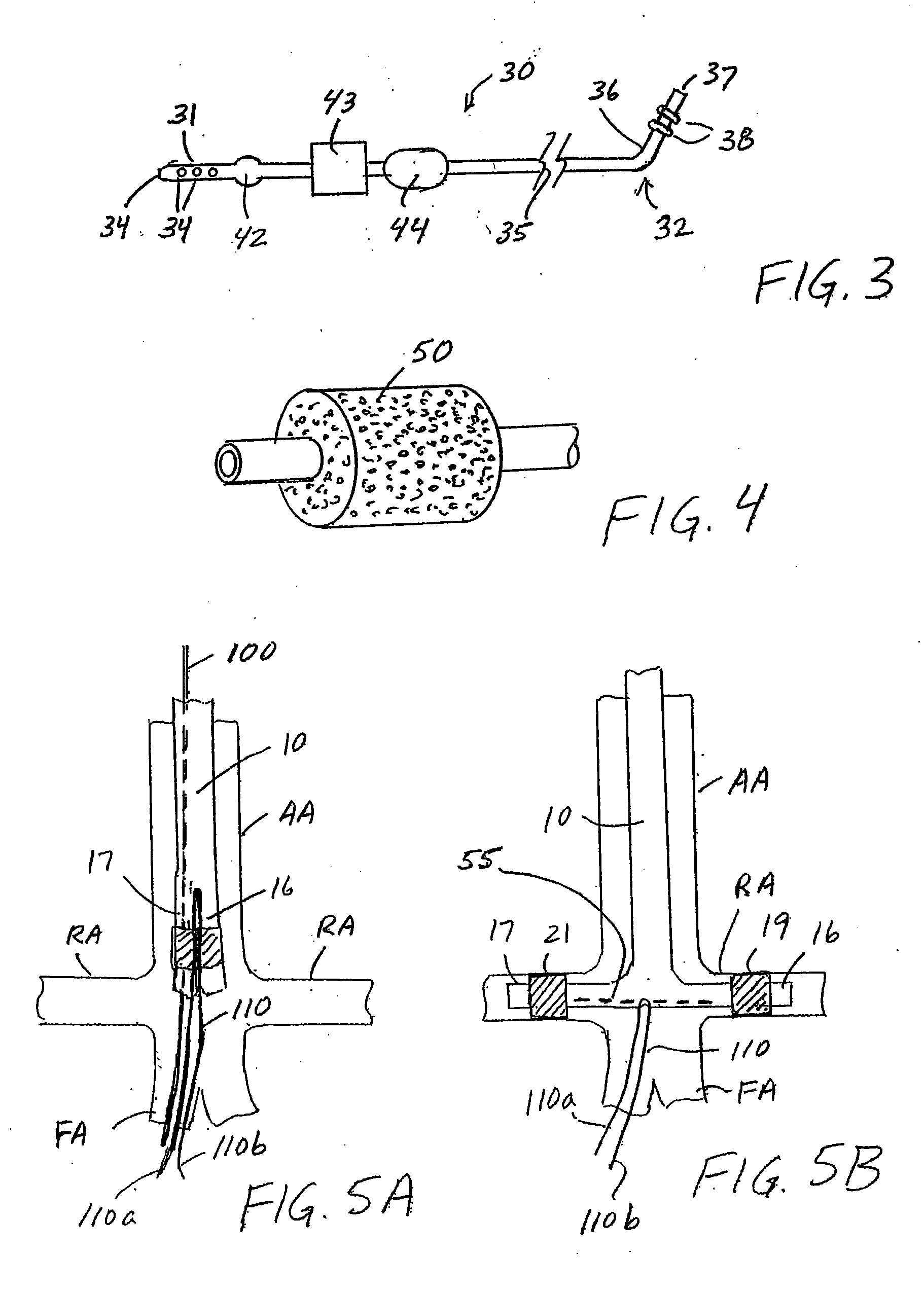Apparatus and methods for treating congestive heart disease
a congestive heart disease and apparatus technology, applied in the field of apparatus for treating congestive heart disease, can solve the problems of pulmonary and cardiac edema, inability to achieve long-term management of chf, undesirable side effects of drugs, etc., and achieve the effects of reducing backflow of blood, reducing side effects, and increasing flow ra
- Summary
- Abstract
- Description
- Claims
- Application Information
AI Technical Summary
Benefits of technology
Problems solved by technology
Method used
Image
Examples
Embodiment Construction
[0026] The present invention provides a catheter that may be implanted in patients suffering from congestive heart failure (“CHF”) to improve renal blood flow and renal function. In accordance with the principles of the present invention, it is expected that by passing blood from the left ventricle directly to the renal arteries during systole, the blood pressure and flow rate in the kidneys will be increased, resulting in enhanced renal function.
[0027] Referring to FIGS. 1 and 2, a first illustrative embodiment of apparatus constructed in accordance with the principles of the present invention is described. Catheter 10 comprises hollow flexible tube having inlet end 11 and outlet end 12. Inlet end 11 includes distal hole 13 and lateral holes 14 that communicate with lumen 15 within catheter 10. Outlet end 12 comprises first and second branch conduits 16 and 17, respectively. Catheter 10 preferably comprises a flexible biocompatible material, such as polyurethane, silicone, or poly...
PUM
 Login to View More
Login to View More Abstract
Description
Claims
Application Information
 Login to View More
Login to View More - R&D
- Intellectual Property
- Life Sciences
- Materials
- Tech Scout
- Unparalleled Data Quality
- Higher Quality Content
- 60% Fewer Hallucinations
Browse by: Latest US Patents, China's latest patents, Technical Efficacy Thesaurus, Application Domain, Technology Topic, Popular Technical Reports.
© 2025 PatSnap. All rights reserved.Legal|Privacy policy|Modern Slavery Act Transparency Statement|Sitemap|About US| Contact US: help@patsnap.com



